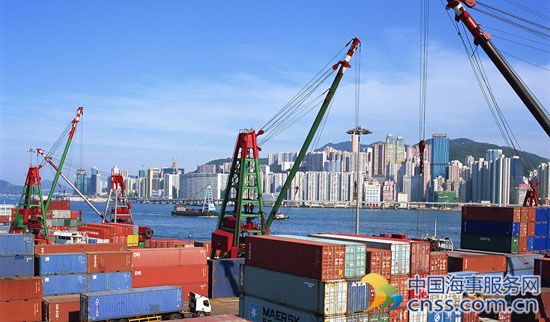Saudi Arabia may insist on Iran oil output cuts to continue OPEC deal: sources

Geopolitical rivals Saudi Arabia and Iran may be headed for another OPEC showdown, as the producer group enters negotiations over extending oil production cuts in force since January.
Saudi Arabia may demand that Iran, which is allowed a slight rise in output under the deal, commit to an output reduction as a condition of continuing the cuts, people familiar with the kingdom’s thinking told S&P Global Platts.
The provision is among several that Saudi Arabia, tired of seeing its market share eroded as it bears most of the burden of OPEC’s agreed cuts, is likely to come to the table with, sources say. These include stipulations on members who have exceeded their quotas and exempt members nearing full production capacity, notably Nigeria.
But it is Iran that is likely to be the biggest sticking point given historic distrust between the two countries, as talks among OPEC members ramp up amid signs that the global inventory glut remains stubbornly high.
“We do expect that the Saudis will have demands on both poorly complying deal participants and those exempted like Iran for the second half,” said Bob McNally, president of energy consultancy Rapidan Group.
“We expect some tension ahead of the May 25 meeting, but as we have seen ministers will temper disgruntlement with supportive public comments so as not to spook investors,” he added.
Saudi energy officials declined to comment on their plans, with one telling Platts on condition of anonymity that “it is too early” to discuss the particulars of negotiations that have yet to start. Iranian energy officials did not respond to requests for comment.
Any move to rein in Iran’s production is likely to be met with significant resistance, experts say.
Oil minister Bijan Zanganeh last week, in remarks viewed as conciliatory towards a deal extension, said Iran would be willing to hold production at 3.8 million b/d for the remainder of the year.
That is right around its quota under the deal of 3.797 million b/d and ahead of its February production level of 3.75 million b/d, according to the latest S&P Global Platts OPEC survey.
Cutting below that “would be a non-starter especially since the Iranian leadership is unlikely to be in a compromising mood in advance of their May presidential elections,” said Helima Croft, head of commodity strategy with RBC Capital.
The deal, which called for OPEC to cut 1.2 million b/d and freeze output at 32.5 million b/d, will be up for review at the organization’s May 25 meeting in Vienna. The participation of 11 non-OPEC producers, who pledged cuts of 558,000 b/d in concert, may also be decided then.
SAUDI DISPLEASURE
An OPEC/non-OPEC monitoring committee meeting this weekend in Kuwait may provide the first signs of whether the pact will survive past its June expiry.
The committee is chaired by Kuwait and also includes OPEC members Algeria and Venezuela, along with non-OPEC Russia and Oman. Saudi Arabia, which holds the rotating OPEC presidency, will also attend Sunday’s meeting.
Saudi Arabia has cut its production by 140,000 b/d below its requirement under the agreement with a January-February average output of 9.92 million b/d, according to the Platts survey. That has helped cover for its less compliant counterparts.
The kingdom has made its displeasure with non-compliant participants known, warning against “free riders.” It is likely to demand stricter adherence for the deal to continue, sources said.
Matthew Reed, senior vice president of Middle East consulting company Foreign Reports, said given how Iran is pumping near its maximum capacity, the Saudis may feel Iran should participate in an “all hands on deck” effort to reduce global inventories, as OPEC has said is the goal of the cuts.
“These days Iranian officials are bragging about producing more oil than at any time since the shah, so a conversation about what Iran can contribute is obligatory,” Reed said.
IRAN CAPACITY CEILING
Diplomatic sparring between Iran and Saudi Arabia scuttled OPEC’s first attempt last April in Doha to forge a production cut deal, as Iran’s insistence on an exemption while it recovered from sanctions prompted Saudi Arabia to withdraw from negotiations.
At a September extraordinary OPEC meeting in Algiers, with Saudi Arabia more eager for a deal and despite Iran having ramped up its production in the intervening months, Iran came away from the talks with a political victory — an allowance to increase output by 90,000 b/d to 3.797 million b/d.
From Iran’s viewpoint, the country is already in compliance with its quota, making it unlikely to acquiesce to any demands to cut production, said Sara Vakhshouri, president of consultancy SVB Energy International.
Vakhshouri estimates that Iran may be able to raise its production capacity by the end of 2017 to a total of 3.78 million b/d, but no further due to financial constraints.
Keeping the current ceiling on Iranian oil output may be all Saudi Arabia can hope for, she said.
“Iran’s production capacity by the end of 2017 is very close to what they agreed to produce in the first half of the year,” said Vakhshouri, who is also a senior fellow at the Atlantic Council. “Hence, even if there are political disagreements, Iran can’t technically produce much higher.”
Source: Platts
HEADLINES
- Do shipping markets want Biden or Trump for the win?
- All 18 crew safe after fire on Japanese-owned tanker off Singapore
- Singapore launching $44m co-investment initiative for maritime tech start-ups
- Cosco debuts Global Shipping Industry Chain Cooperation Initiative
- US warns of more shipping sanctions
- China continues seaport consolidation as Dalian offer goes unconditional